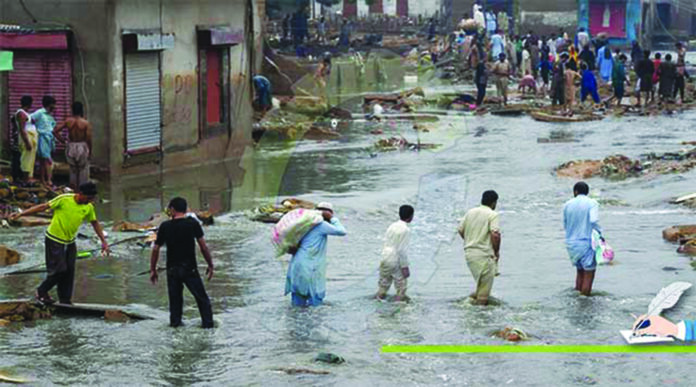Globally, people are already noticing the effects of climate change, and if nothing is done to stop them, they will have severe economic effects. Despite the fact that Pakistan’s contribution to Green House Gases (GHG) emissions is low (0.8 percent) when compared to other countries but it is one of the hardest hit by climate change. The present study is an attempt to identify the impact of climate change on economic growth. Climate change is widely acknowledged as having major consequences for water supplies, agricultural growth, ecology, the health of humans and animals, forestry systems, and socioeconomic sectors.
The industrial discharge of GHGs grew rapidly after Industrialization. GHGs have a strong warming propensity and a lengthy lifespan which can contribute to global warming. It should be realized that the climate is not a continuous, unchanging reality even when left alone. High levels of CO2 emissions are frequently cited as a primary driver of global warming, and lowering CO2 emissions is typically seen as the most pressing issue for global economies. Forecasts show that if effective CO2 emission reduction measures are not implemented, the global temperature would rise by 3–4⸰C over pre-industrial levels. To improve social welfare, sustainable economic growth and development are required. It implies that environmental sustainability should be safeguarded rather than economic progress occurring at the price of environmental damage. It has been emphasized that environmental deterioration is a difficult issue in the process of economic growth because environmental deterioration has a direct influence on people’s living standards and the operation of the economy.
Pakistan, a warm region, is especially vulnerable to atmospheric changes since it is situated in an area where temperatures are higher than the world average. The majority of the country is dry and semi-arid (around 60 percent of the area receives less than 250 mm of rain annually, with the remaining 24 percent getting between 250 and 500 mm), while Hindu Kush-Karakoram Himalayan glaciers provide the majority of the nation’s rivers. The accelerated melting of these glaciers contributes to increased water flow in the short term, leading to the risk of glacial lake outburst floods (GLOF). Due to global warming, they are fast vanishing, making the economy highly vulnerable. In recent years, rising temperatures have caused a noticeable change in monsoon patterns as well as an increase in hurricane activity in northern Pakistan, with implications for agriculture.
Pakistan is the world’s sixth most susceptible country to climate change and it can be seen that the future rise in average temperature in Pakistan is significantly greater than in the world temperature which is a very alarming situation. The temperature change also caused droughts, desertification, water stress and flooding. A heat wave hit Karachi in 2015 lead to a subsequent water shortage that exists to date, and a drought in Balochistan and Tharparkar that caused large-scale deaths. More than 1,200 people died in Karachi alone during the June 2015 heat wave, while 200 more perished in other areas of Sindh province. In 2022, the heat wave in Cholistan has caused the desert to sizzle with high temperature and absence of rainfall: around 200 water ponds have dried, causing hardships to the local population and their animals.
Pakistan’s population is expanding more quickly than that of the rest of the world, and as a result urbanization has increased, raising serious concerns about sudden changes in the climate. Over 25 million people are employed in Pakistan’s agriculture-based economy. Pakistan is ranked as the world’s fifth most populous economy where the population growth rate is more than 2.83 percent. Managing urbanization effectively requires urban planning, investment in infrastructure, and provision of basic services.
By working together and taking immediate action, we can mitigate the impacts of climate change, protect the environment, and create a sustainable future for generations to come. The Climate change crisis is a pressing global challenge that requires immediate attention and concerted efforts from all nations. The climate change crisis requires a multifaceted approach that encompasses various sectors, including energy, agriculture, transportation, waste management, and policy implementation.
Environmental change in Pakistan will require the commitment and cooperation of all sectors of society, along with effective governance and long-term planning. We should launch large-scale afforestation and reforestation projects to counter deforestation and restore ecosystems. Tree planting efforts can help combat climate change. Governments, businesses, civil society organizations, and individuals all play critical roles in tackling the climate change crisis. It is essential to prioritize sustainability in decision-making processes, invest in green technologies and infrastructure, and develop policies that align with global climate goals.
By working together and taking immediate action, we can mitigate the impacts of climate change, protect the environment, and create a sustainable future for generations to come. The Climate change crisis is a pressing global challenge that requires immediate attention and concerted efforts from all nations. The climate change crisis requires a multifaceted approach that encompasses various sectors, including energy, agriculture, transportation, waste management, and policy implementation.























